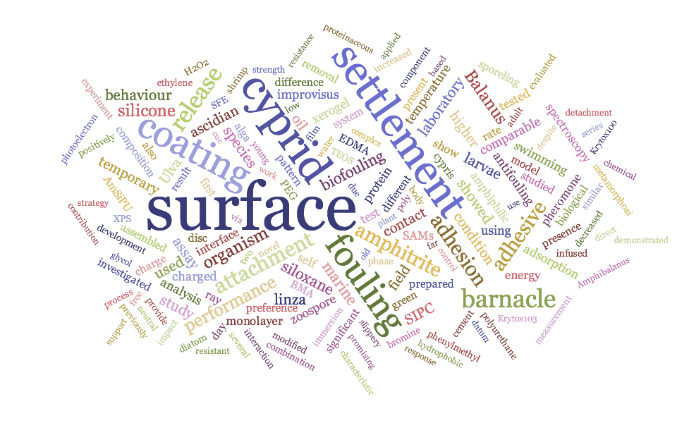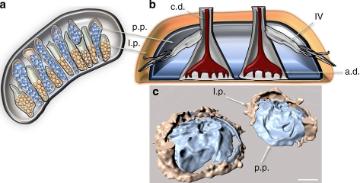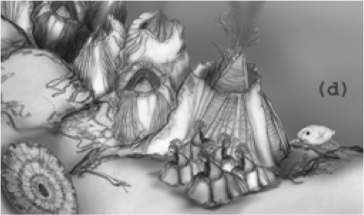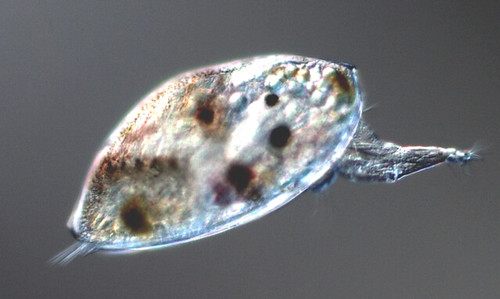Research

Word cloud generated from abstracts of journal articles published since January 2014
Fundamentals of underwater bioadhesion

Bioadhesion is fundamental to the evolutionary success of marine organisms that make their living either permanently or temporarily attached to surfaces. We aim to understand the nature of marine bioadhesives and how they are able to function underwater on a range of natural and artificial surfaces. In answering these questions, we focus on model marine biofouling organisms, including barnacles and diatoms.
See for example:
Aldred, N. and Clare, A.S. (2008) The adhesive strategies of cyprids and development of barnacle-resistant marine coatings. Biofouling 24: 351-363.
Gohad, N., Aldred, N., Hartson, C., Lee, Y.J., Cicerone, M., Clare, A.S., Rittschof, D. and Mount, A.S. (2014) Synergistic roles for lipids and proteins in the permanent adhesive of barnacle larvae. Nature Communications 5: 1-9.
Petrone, L., Aldred, N., Emami, K., Enander, K., Ederth, T. and Clare, A.S. (2015) Chemistry-specific surface adsorption of the barnacle settlement-inducing protein complex. Interface Focus 5: 20140047.
Aldred, N., Chan, V.B.S., Emami, K., Okano, K., Clare, A.S. and Mount, A.S. (2020) Chitin is a functional component of the larval adhesive of barnacles. Communications Biology 3: 31.
Surface characteristics that modulate settlement/adhesion

One of the main drivers of our research is finding an environmentally sustainable solution to control marine biofouling. A central question is: can a broad-spectrum solution be found that does not rely on biocides? Unfortunately for the field of antifouling research, nature is diverse and adaptable and there is always likely to be some organism that can stick to a novel non-toxic surface. So the answer to the question is: probably not. Nevertheless, an understanding of the characteristics of surfaces that are important to organisms at settlement may highlight unifying principles to deter settlement and/or interfere with adhesion, that can perhaps be combined, much as in nature, in a hybrid coating.
See for example:
Clare, A.S., Rittschof, D., Gerhart, D.J. and Maki, J.S. (1992) Molecular approaches to nontoxic antifouling. Invert. Reprod. Devel. 22: 67-76.
Petrone, L., Di Fino, A., Aldred, N., Sukkaew, P., Ederth, T. and Clare, A.S. (2011) Effects of surface charge and Gibbs surface energy on the settlement behavior of barnacle cyprids (Balanus amphitrite). Biofouling 27: 1043-1055.
Patterson, A.L., Wenning, B., Rizis, G., Calabrese, D.R., Finlay, J.A., Franco, S.C., Clare, A.S., Ober, C.K. and Segalman, R.A. (2017) Role of backbone chemistry and monomer sequence in amphiphilic oligopeptide- and oligopeptoid-modified PDMS- and PEO-based block copolymers for marine antifouling and fouling release coatings. Macromolecules 50: 2656-2667.
Gatley-Montross CM, Finlay JA, Aldred N, Cassady H, Destino JF, Orihuela B, Hickner MA, Clare AS, Rittschof D, Holm ER, Detty MR. Multivariate analysis of attachment of biofouling organisms in response to material surface characteristics. Biointerphases 2017, 12(5), 051003.
Barry, M.E., Davidson, E.C., Zhang, C., Patterson, A.L., Yu, B., Leonardi, A.K., Duzen, N., Malaviya, K., Clarke, J.L., Finlay, J.A., Clare, A.S., Chen, Z., Ober, C.K. and Segalman, R.A. (2019) The role of hydrogen bonding in peptoid-based marine antifouling coatings. Macromolecules 52: 1287-1295.
Chemical ecology of surface colonisation

Although a variety of surface-associated factors potentially modulate surface colonisation, infochemicals appear to play a key role for many marine organisms. A knowledge of these chemicals and how they are perceived is essential to understanding population and community dynamics and may offer important clues to ways to interfere or promote surface colonisation with applications in, for example, antifouling and aquaculture respectively.
See for example:
Dreanno C, Matsumura K, Dohmae N, Takio K, Hirota H, Kirby RR and Clare A.S. (2006) An α2-macroglobulin-like protein is the cue to gregarious settlement of the barnacle, Balanus amphitrite. PNAS 103: 14396-14401.
Clare, A.S.(2011) Toward a characterisation of the chemical cue to barnacle gregariousness. In: Chemical Communication in Crustaceans. T. Breithaupt & M Thiel (eds), Springer, New York. pp. 431-450.
Pagett, H.E., Abrahams, J.L., Bones, J., O'Donoghue, N., Marles-Wright, J., Lewis, R.J., Harris, J.R., Caldwell, G.S., Rudd, P.M. and Clare, A.S. (2012) Structural characterisation of the N-glycan moiety of the barnacle settlement-inducing protein complex (SIPC). Journal of Experimental Biology 215: 1192-1198.
